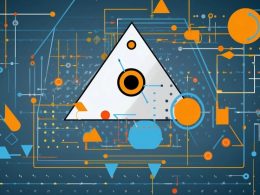In light of recent events with OpenAI, the conversation on AI development has morphed into one of acceleration versus deceleration and the alignment of AI tools with humanity. The AI safety conversation has also quickly become dominated by a futuristic and philosophical debate: Should we approach artificial general intelligence (AGI), where AI will become advanced enough to perform any task the way a human could? Is that even possible?
While that aspect of the discussion is important, it is incomplete if we fail to address one of AI’s core challenges: It’s incredibly expensive. The internet revolution had an equalizing effect as software was available to the masses and the barriers to entry were skills. These barriers got lower over time with evolving tooling, new programming languages, and the cloud.
The Rising Cost of AI Development
When it comes to AI and its recent advancements, however, we have to realize that most of the gains have so far been made by adding more scale, which requires more computing power. We have not reached a plateau here, hence the billions of dollars that the software giants are throwing at acquiring more GPUs and optimizing computers.
To build intelligence, you need talent, data, and scalable compute. The demand for the latter is growing exponentially, meaning that AI has very quickly become the game for the few who have access to these resources. Most countries cannot afford to be a part of the conversation in a meaningful way, let alone individuals and companies.
“To truly promote AI safety, we need to democratize it. Only then can we implement the appropriate guardrails and maximize AI’s positive impact.”
– Naré Vardanyan
The costs are not just from training these models, but deploying them too. According to Coatue’s recent research, the demand for GPUs is only just beginning. The investment firm is predicting that the shortage may even stress our power grid. The increasing usage of GPUs will also mean higher server costs.
Imagine a world where everything we are seeing now in terms of the capabilities of these systems is the worst they are ever going to be. They are only going to get more and more powerful, and unless we find solutions, they will become more and more resource-intensive. With AI, only the companies with the financial means to build models and capabilities can do so, and we have only had a glimpse of the pitfalls of this scenario.
The Dangers of Centralization
To truly promote AI safety, it is vital to address the issue of centralization. When companies hold the majority of AI resources, there is a lack of control, access to alternatives, and potential safety risks. Additionally, the wider gap in access to AI technology and resources creates further inequalities in society.
Centralization also introduces risks related to probabilistic systems. In a world accustomed to definitive answers, relying heavily on AI models that can change their outputs without warning can lead to unpredictable outcomes.
“Another risk is relying heavily on systems that are randomly probabilistic. We are not used to this and the world we live in so far has been engineered and designed to function with a definitive answer.”
Even if OpenAI continues to thrive, their models are fluid in terms of output, and they constantly tweak them, which means the code you have written to support these and the results your customers are relying on can change without your knowledge or control.
More broadly, if we live in a world where AI is costly and has limited ownership, we will create a wider gap in who can benefit from this technology and multiply the already existing inequalities. A world where some have access to superintelligence and others do not assumes a completely different order of things and will be hard to balance.
Towards a More Inclusive AI Development
One of the most important things we can do to improve AI’s benefits (and safely) is to bring the cost down for large-scale deployments. We have to diversify investments in AI and broaden who has access to compute resources and talent to train and deploy new models. And, of course, everything comes down to data. Data and data ownership will matter. The more unique, high quality and available the data, the more useful it will be.
“If we can successfully make AI more cost-effective, we can bring more players into this space and improve the reliability and safety of these tools. We can also achieve a goal that most people in this space hold — to bring value to the greatest amount of people.”
– Naré Vardanyan, CEO and co-founder of Ntropy
While there are current gaps in the performance of open-source models, we are going to see their utilization take off, assuming the White House enables open source to truly remain open. In many cases, models can be optimized for a specific application.
The last mile of AI will be companies building routing logic, evaluations, and orchestration layers on top of different models, specializing them for different verticals. With open-source models, it’s easier to take a multi-model approach, and you have more control. However, the performance gaps are still there. I presume we will end up in a world where you will have junior models optimized to perform less complex tasks at scale, whereas larger super-intelligent models will act as oracles for updates and will increasingly spend computing on solving more complex problems.
You do not need a trillion-parameter model to respond to a customer service request. We have seen AI demos, AI rounds, AI collaborations, and releases. Now we need to bring this AI to production at a very large scale, sustainably and reliably. There are emerging companies that are working on this layer, making cross-model multiplexing a reality.
As an industry, we should prioritize more investments here, as this will make an outsized impact.










